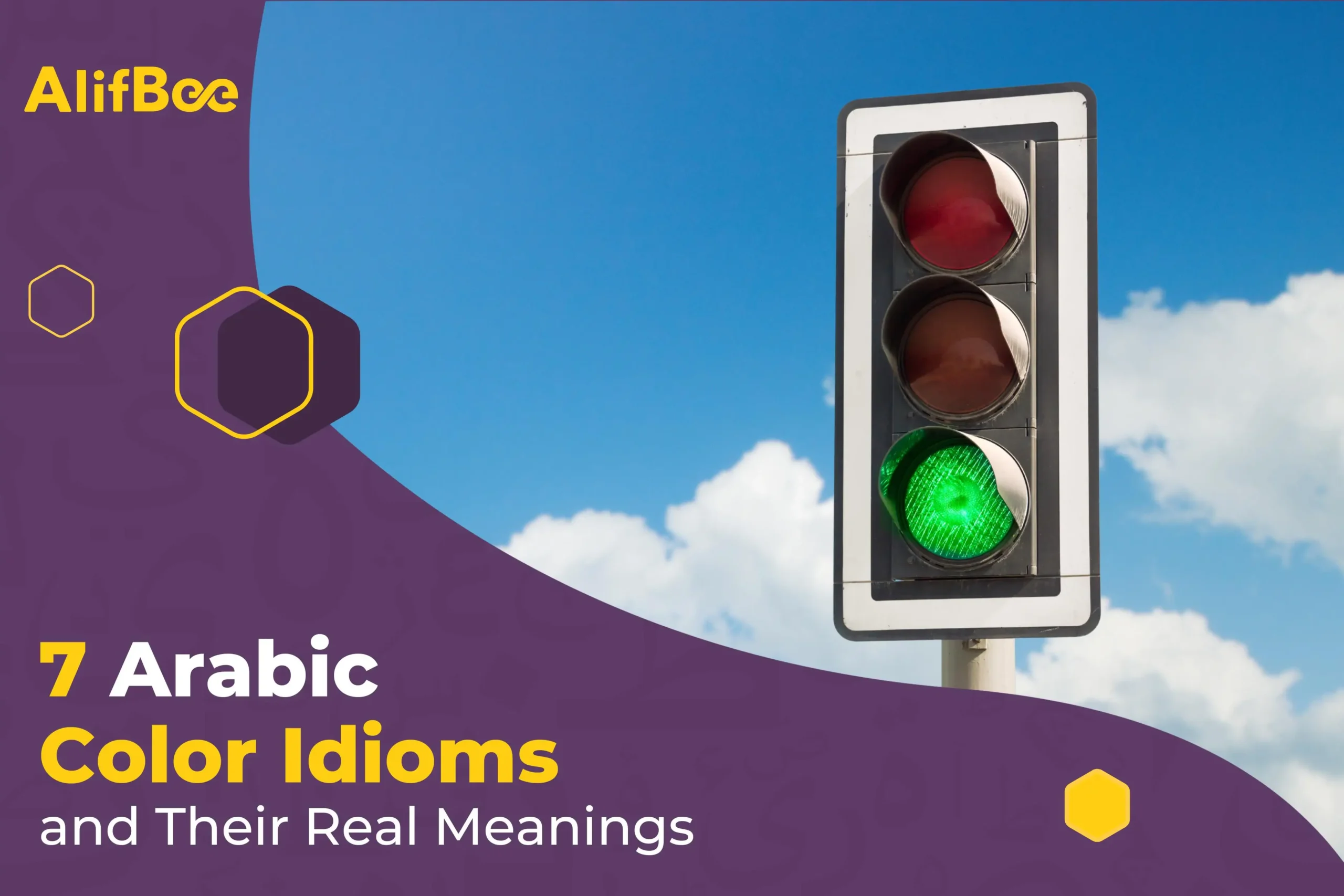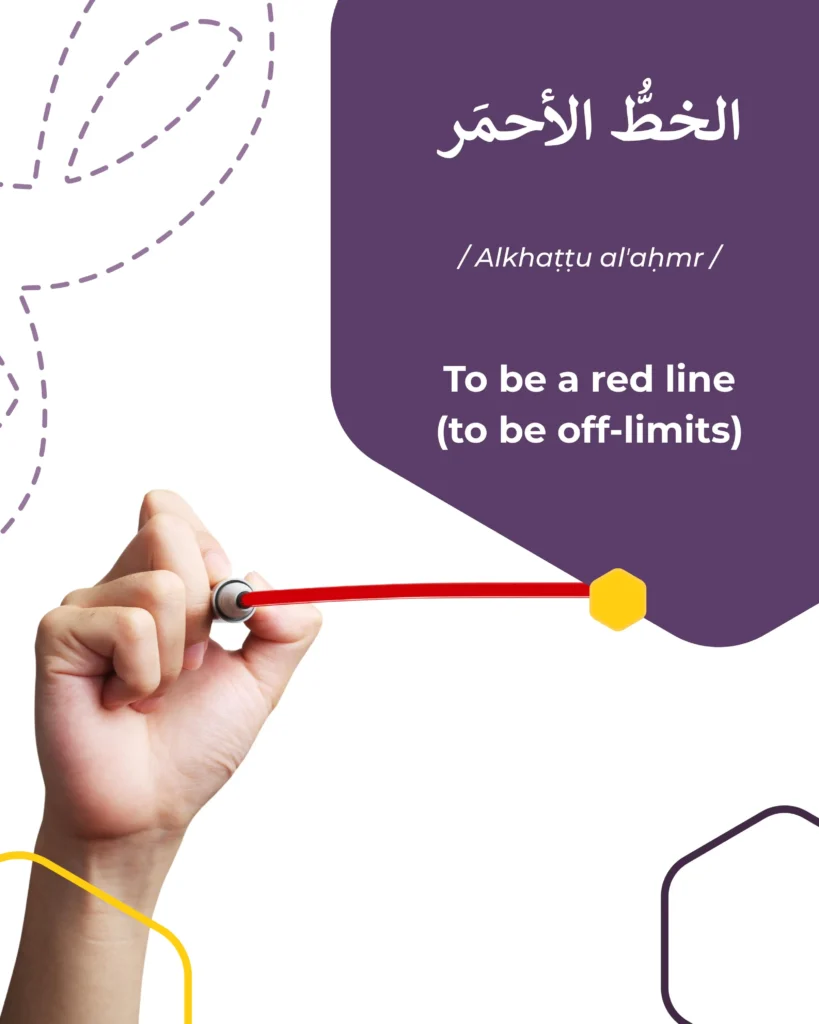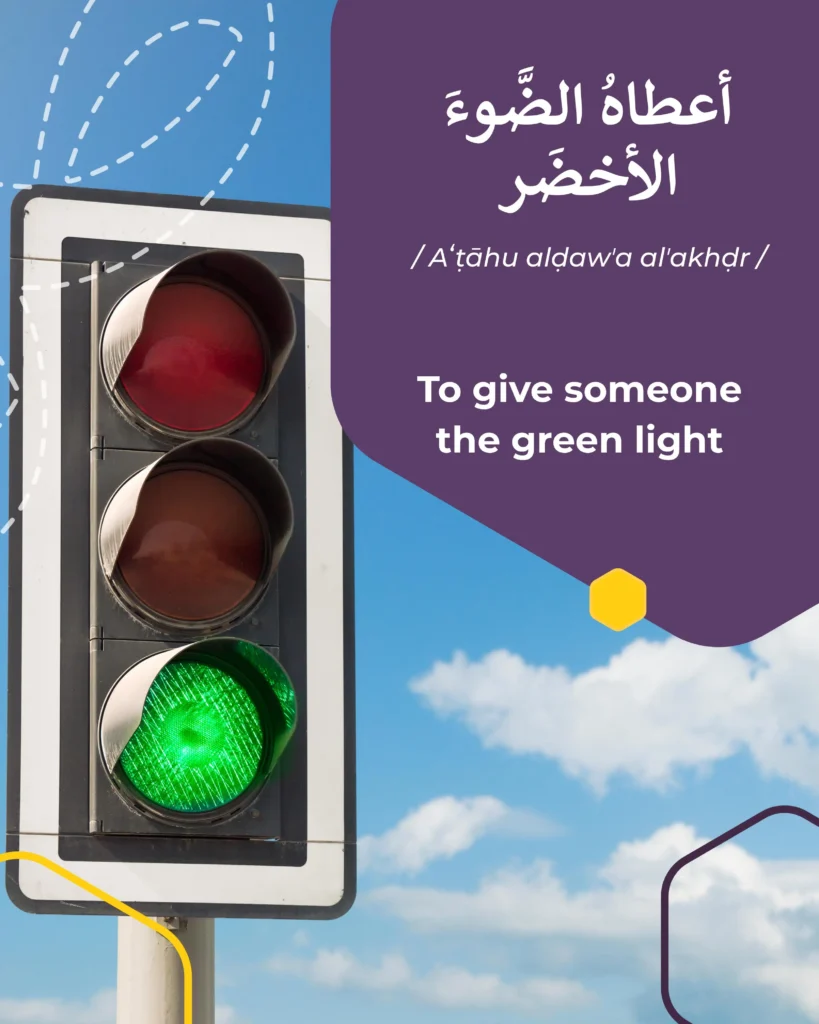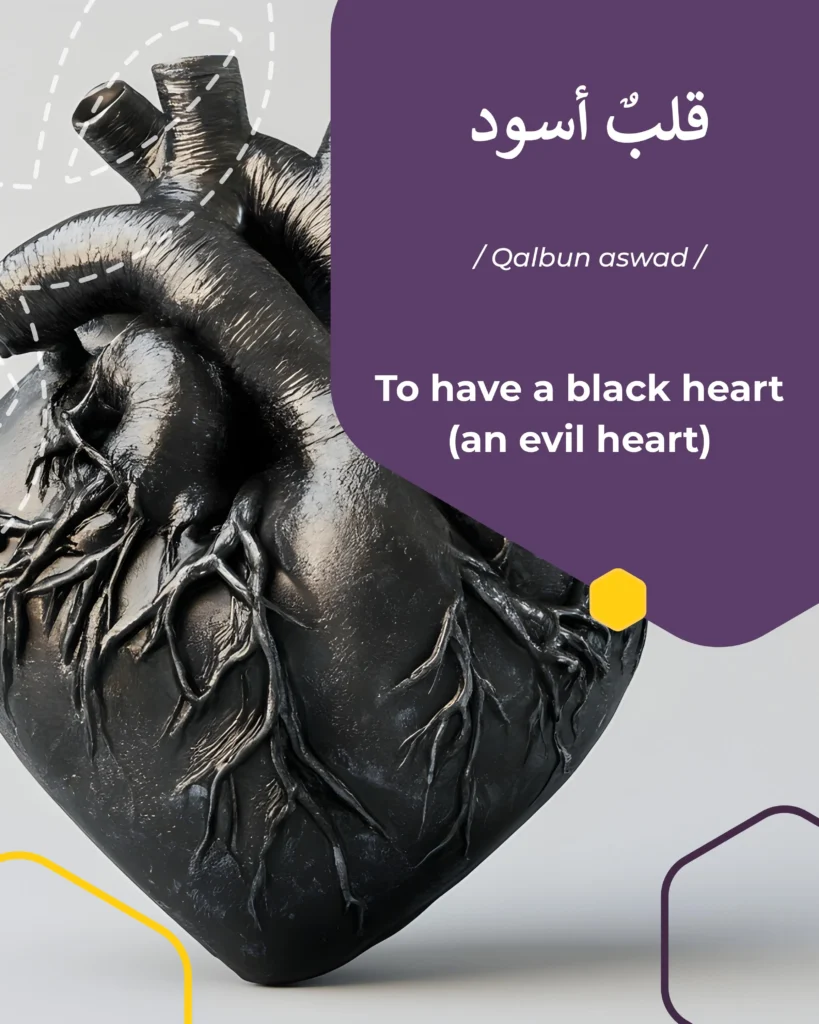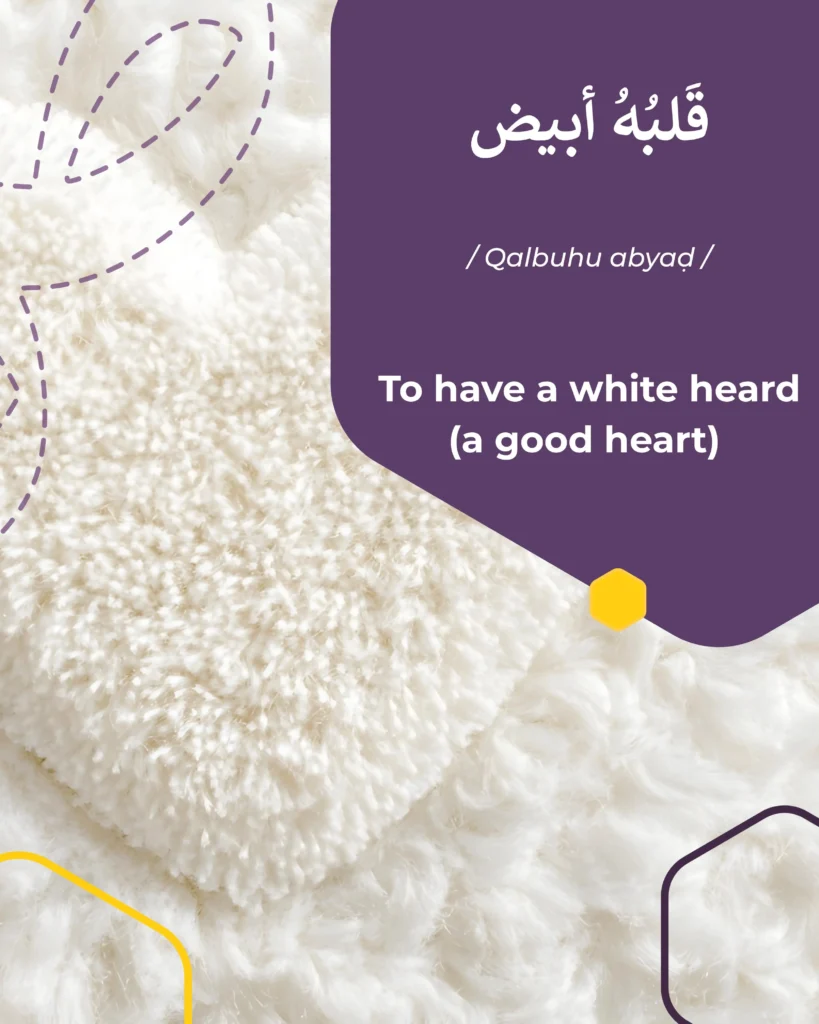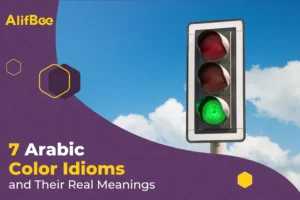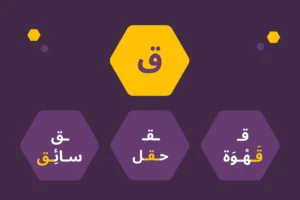
 Listen to: 7 Arabic Idioms with Color Words and Their Real Meanings
Listen to: 7 Arabic Idioms with Color Words and Their Real Meanings

Colors don’t just live in paintings or on clothing racks. Colors in Arabic sneak into everyday speech, slip into old sayings, and sometimes reveal how people feel — just like how English uses “feeling blue.” But Arabic takes it a step further. A color can describe a personality, a reputation, or even a warning.
So in this little tour, we’re diving into seven Arabic idioms that use colors in surprisingly vivid ways. You’ll see what they mean, how they’re used, and why they carry so much cultural weight. By the end, you’ll be able to use them naturally in conversations — and sound a bit more like someone who grew up hearing them at the dinner table.
7 Arabic Idioms with Color Words
Alright, let’s start with the first expression
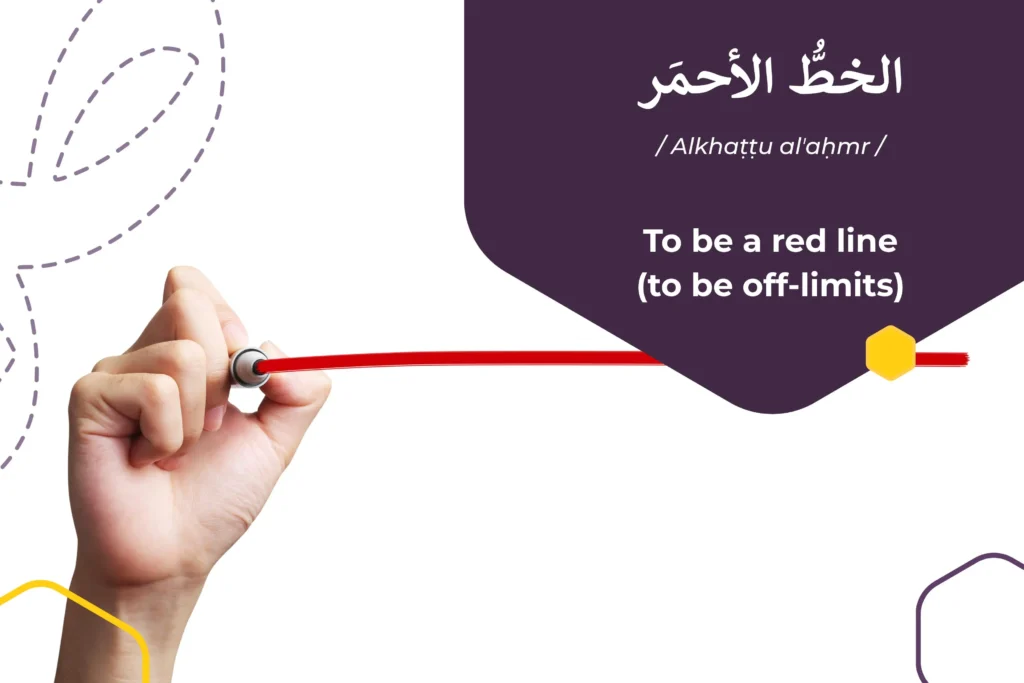
Alkhaṭṭu alʼaḥmr الخطُّ الأحمَر
English
Pronunciation
Arabic Expression
To be a red line (to be off-limits)
Alkhaṭṭu alʼaḥmr
الخطُُّ أحمَر
Don’t lie to your teacher; that’s a red line.
Lā takdhib ʻalá muʻallimak ; Hādhā khaṭṭun aḥmar
لا تَكْذِب على مُعلِّمك؛ هذا خطٌّ أحمَر
This is a red line
hādhā khaṭṭun aḥmar
هذا خَطٌٌّ أحمَر
This Arabic color idiom talks about a boundary that must not be crossed. This boundary can be personal, moral, political, or can be related to laws and rules.
So, when someone says hādhā khaṭṭun aḥmar, they mean, “This is off-limits” or “Don’t go further.”
It can also be heard in the news when talking about sensitive issues, for example,
English
Pronunciation
Arabic Expression
Our national security is a red line that can’t be violated.
Amnunā al-waṭaniyyu khaṭṭun aḥmaru lā yanbaghī al-masāsu bih.
أَمْنُنَا الوَطَنِيُّ خَطٌّ أَحْمَرُ لَا يَنْبَغِي المَسَاسُ بِه
And it is also common in daily life, like saying:
English
Pronunciation
Arabic Expression
Respect in this company is a red line.
Al-iḥtirāmu fī ash-sharikati khaṭṭun aḥmar
الِاحْتِرامُ فِي الشَّرِكَةِ خَطٌّ أَحْمَر
This Arabic color expression usually comes with the verb (Tajāwaza)تجاوز , which means “to cross” to talk about someone who crossed the red line. It can also be used in a plural form and is a more serious expression than the singular one.
For instance,
He crossed all of the red lines.
Laqad tajāwaza kulla al-khuṭūṭa al-Ḥamrāʼ
لقد تَجاوزَ كُلَّ الخُطوطِ الحَمرَاء
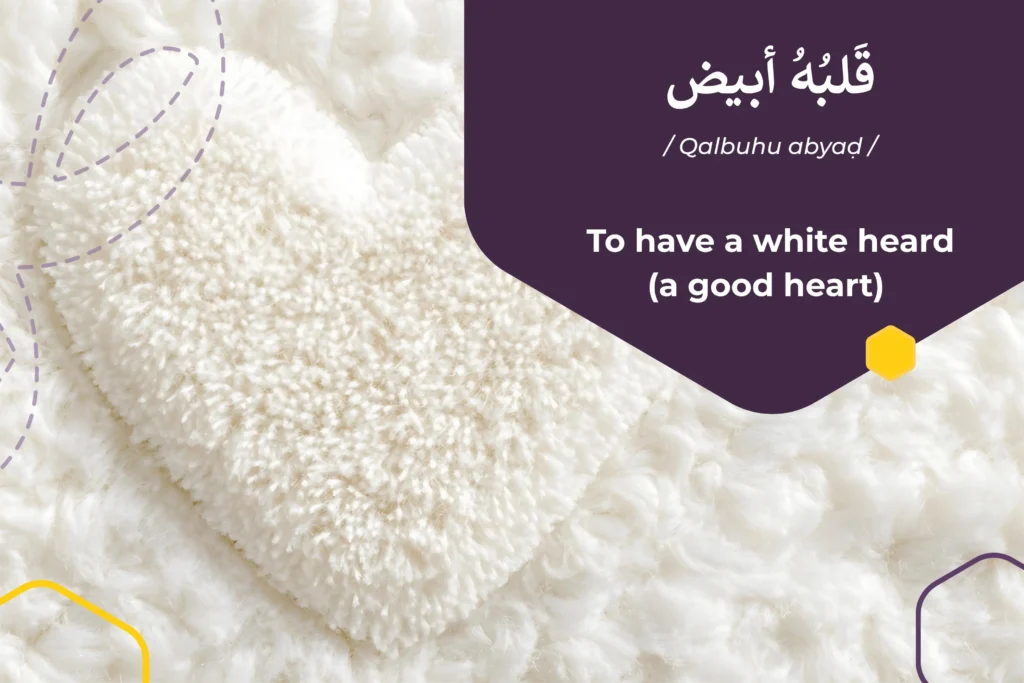
Qalbuhu abyaḍ قَلبُهُ أبيض
English
Pronunciation
Arabic Expression
To have a white heard (a good heart)
Qalbuhu abyaḍ
قَلبُهُ أَبيَض
He’s kind; his heart is pure.
Huwa ṭayyibun, qalbuhu abyaḍ.
هُوَ طَيِّبٌ، قَلْبُهُ أَبْيَض
Use this one when you want to describe someone who has a kind, forgiving heart and pure intentions, someone who wishes others well. This Arabic color idiom shows how Arabs associate colors with emotional and moral qualities. White is linked to forgiveness and a clean conscience, while black is connected with evil and bitterness.

Ikhḍarra ʻūduh اِخضرَّ عودُه
English
Pronunciation
Arabic Expression
To grow strong
Ikhḍarra ʻūduhu
اِخضرَّ عودُه
He’s grown strong since he started exercising
ikhḍarra ʿūduhu mundhu an bada’a yumārisu ar-riyāḍa
اِخْضَرَّ عُودُهُ مُنْذُ أَنْ بَدَأَ يُمَارِسُ الرِّيَاضَةَ
This is an interesting expression with two meanings. The first one is literal, ‘his stem turned green,’ and the figurative means ‘he became strong, or he is in the prime of youth.’
This image is taken from nature. When a plant’s stem turns green, it means life is flowing through it, and it’s no longer fragile or dry.
You can use it to describe a young person who has grown stronger and more mature, and when you want to emphasize youth, success, or renewal.
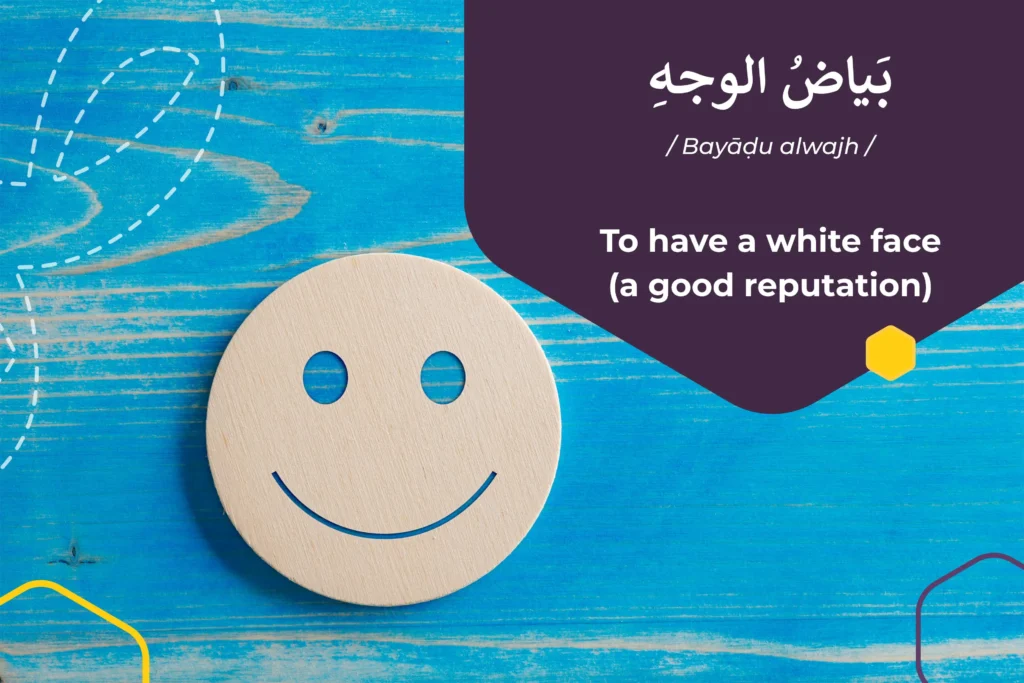
Bayāḍu alwajh بَياضُ الوجهِ
English
Pronunciation
Arabic Expression
To have a white face (a good reputation)
Bayāḍu alwajh
بَياضُ الوجه
He preserved his good reputation through his honesty and integrity.
Ḥāfaẓa ʿalā bayāḍi wajhihi bi-ṣidqihi wa-amānatih.
حافَظَ عَلَى بَياضِ وَجْهِهِ بِصِدْقِهِ وَأَمَانَتِه
The literal meaning of this Arabic idiom is ‘the whiteness of the face’. But what it really means is ‘a good reputation, honor, or a source of pride.’
The face represents one’s dignity and public image. It’s not about appearance or skin color, but about a person whose name and actions bring light and respect to themselves or their community.
On the other hand, you might hear Iswadda wajhuh اِسودَّ وجْهه which means his face has“blackened”, which symbolizes shame and disgrace.
In many Arab societies, reputation is a family treasure. When someone says Bayyaḍa allahu wajhuka بَيَّضَ اللهُ وَجْهَكَ meaning May God make your face white, it’s a warm way of saying, “You’ve made us proud.”
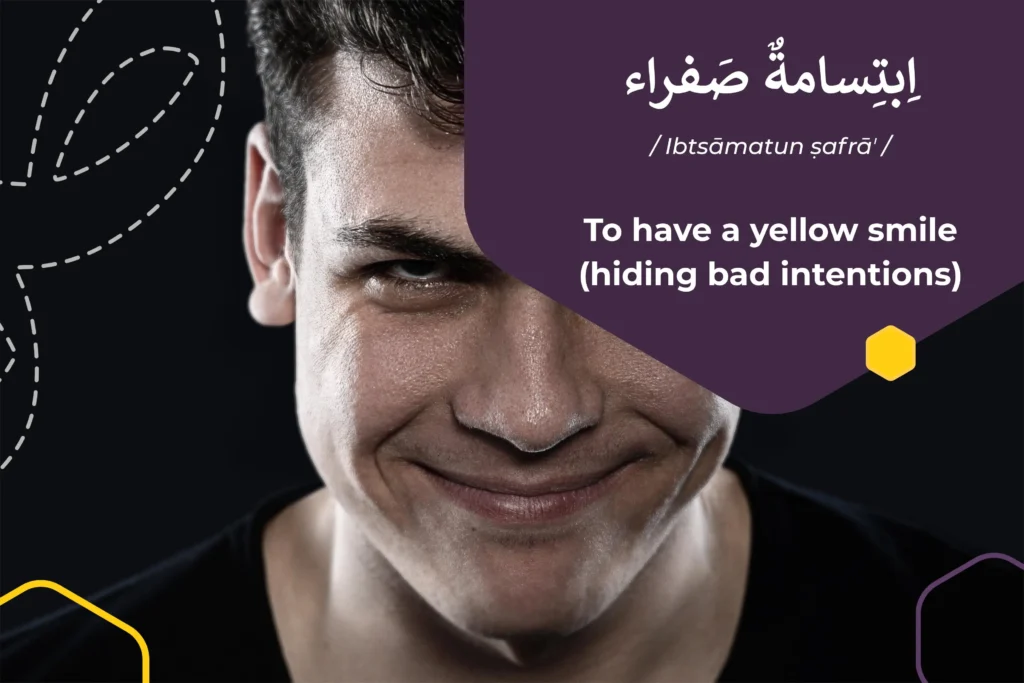
Ibtsāmatun ṣafrāʼ اِبتِسامةٌ صَفراء
English
Pronunciation
Arabic Expression
To have a yellow smile (hiding bad intentions)
Ibtisāmatun ṣafrāʼ
اِبتِسامةٌ صَفراء
He welcomed the guest with a yellow (fake) smile.
Raḥḥaba bi-ḍ-ḍayfi bi-ibtisāmatin ṣafrāʾ.
رَحَّبَ بِالضَّيْفِ بِاِبْتِسَامَةٍ صَفْرَاء
This Arabic color idiom means a yellow smile, literally, but what it actually means is a fake or insincere smile that hides bad intention or discomfort.
When someone gives a yellow smile, it may look polite on the surface, but it feels tense or forced from beneath, as if they are pretending, and it’s usually out of jealousy, deceit, or unease.
The color yellow, in Arabic, carries the meaning of weakness, envy, or sickness, like something pale that lacks vitality. So, a yellow smile is not a warm or golden one; rather, it’s drained of sincerity.
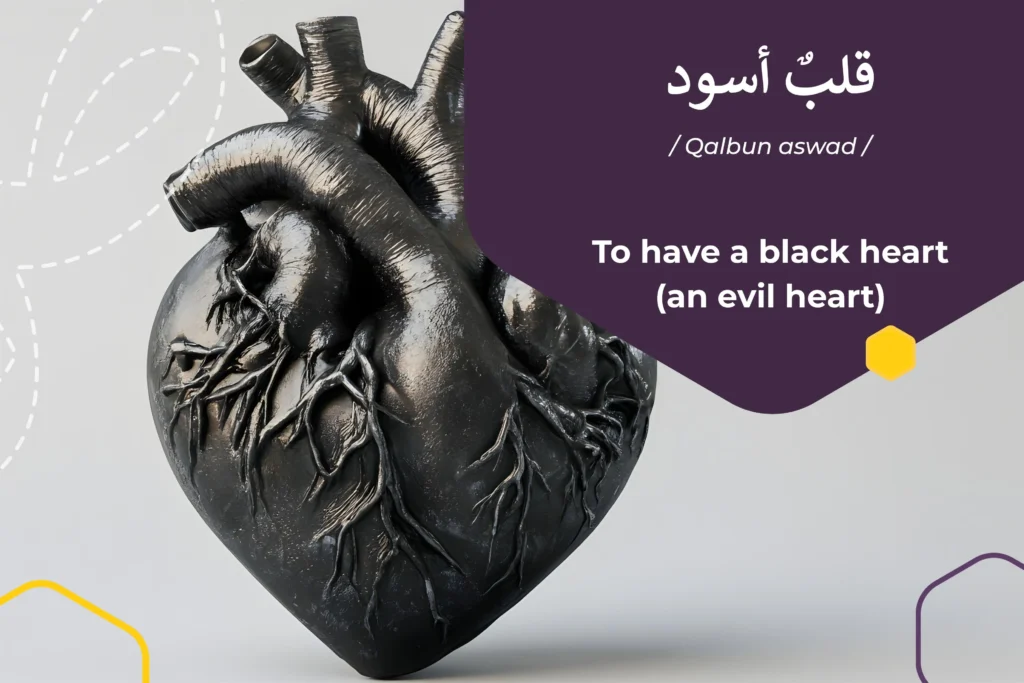
Qalbun aswad قلبٌ أسود
English
Pronunciation
Arabic Expression
To have a black heart (an evil heart)
Qalbun aswad
قلبٌ أَسود
Don’t befriend someone with a black heart.
Lā tuṣāḥib dhā qalbin aswad.
لَا تُصَاحِبْ ذَا قَلْبٍ أَسْوَد
In Arabic, as in many cultures, black symbolizes darkness, hatred, and negativity, while white symbolizes purity and goodness.
So, someone with Qalb aswad قَلْب أَسْوَدْ is someone who holds grudges, wishes harm, or enjoys others’ suffering. It is a kind of corruption that blocks empathy and goodness, as opposed to Qalbun abyaḍ قَلْبٌ أَبيَض a white heart, which reflects forgiveness and purity.
The word قلب (the heart) is seen here as the center of emotion, morality, and faith.
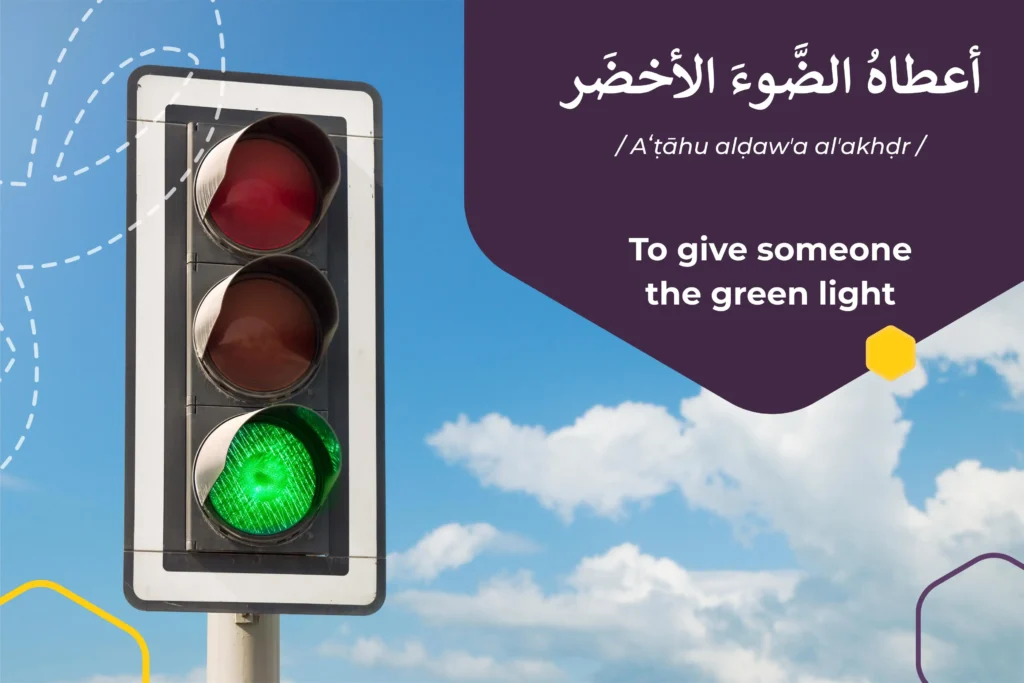
Aʻṭāhu alḍawʼa alʼakhḍr أعطاهُ الضَّوءَ الأخضَر
English
Pronunciation
Arabic Expression
To give someone the green light
Aʻṭāhu alḍawʼa alʼakhḍar
أعطاهُ الضَّوءَ الأخضَر
After reviewing the plan, the manager gave him the green light to proceed.
Baʿda dirāsati al-khuṭṭa, aʿṭāhu al-mudīru aḍ-ḍaw’a al-akhdara littanfīdh.
بَعْدَ دِرَاسَةِ الخُطَّةِ، أَعْطَاهُ المُدِيرُ الضَّوءَ الأَخْضَرَ لِلتَّنْفِيذ
The literal meaning of the last Arabic color idiom is ‘he gave him the green light’, which means ‘he gave him permission or approval to do something’.
This Arabic phrase is almost the same as its English version. Just like a green light means “go,” Aʻṭāhu alḍḍawʼa alʼkhḍar أعطاهُ الضَّوءَ الأخضَر means someone was given permission to do something.
The color green Akhḍar أَخْضَر has a special meaning in Arabic culture. Besides its modern use for “go” or “permission,” it also stands for life, growth, and blessing. So, when someone “gives the green light,” it’s like saying yes, and it also shows trust and hope that things will go well.
What Arabic Color Idioms Mean in Arabic Culture
Color phrases are of great importance in Arabic culture. They carry deep symbolic associations and help us say what words alone cannot.
When we talk about purity, honor, or peace, we often associate them with the color white. On the other hand, black is a symbol of sadness, mystery, evil, or cruelty. Green represents life, renewal, and Islam, symbolizing hope and divine blessing. Red conveys danger, boundaries, or strong emotion, while yellow often suggests weakness, jealousy, or illness.
Vocabulary Tips: Using Arabic Idioms Naturally
- Don’t memorize Arabic idioms. Learn them in context. The Arabic expressions with colors can change form slightly based on grammar and place in the sentence. For example, Qalbuhu abyaḍ قَلْبُهُ أَبْيَض “his heart is white”, makes more sense when used to describe a kind or forgiving person.
- Use popular, easy-to-recognize expressions first. They’re safer and sound more natural, like the ones in this blog.
- Pay attention to the tone, since some Arabic idioms praise while others criticize. Know exactly when to use them.
- Listen and imitate native speakers in Arabic shows, podcasts, and everyday conversations.
- Use the Arabic idioms in casual, friendly situations, like giving compliments, telling stories, or making jokes.
Final word
After reading about Arabic color idioms, we notice how language and culture are deeply connected. We learned that while languages differ, the emotions behind colors are universally human.
As we mentioned earlier, we invite you to use these Arabic expressions with colors in your conversations, and take time to read more about their origin, for this will help you understand the culture behind the words.
If you like this blog, you may want to read Learn 10 Basic Colors in Arabic with Easy Examples, or 50 Easy Arabic Words for Beginners
Learn hundreds of Arabic expressions and their stories on the AlifBee App—now with a 14-day free trial!

